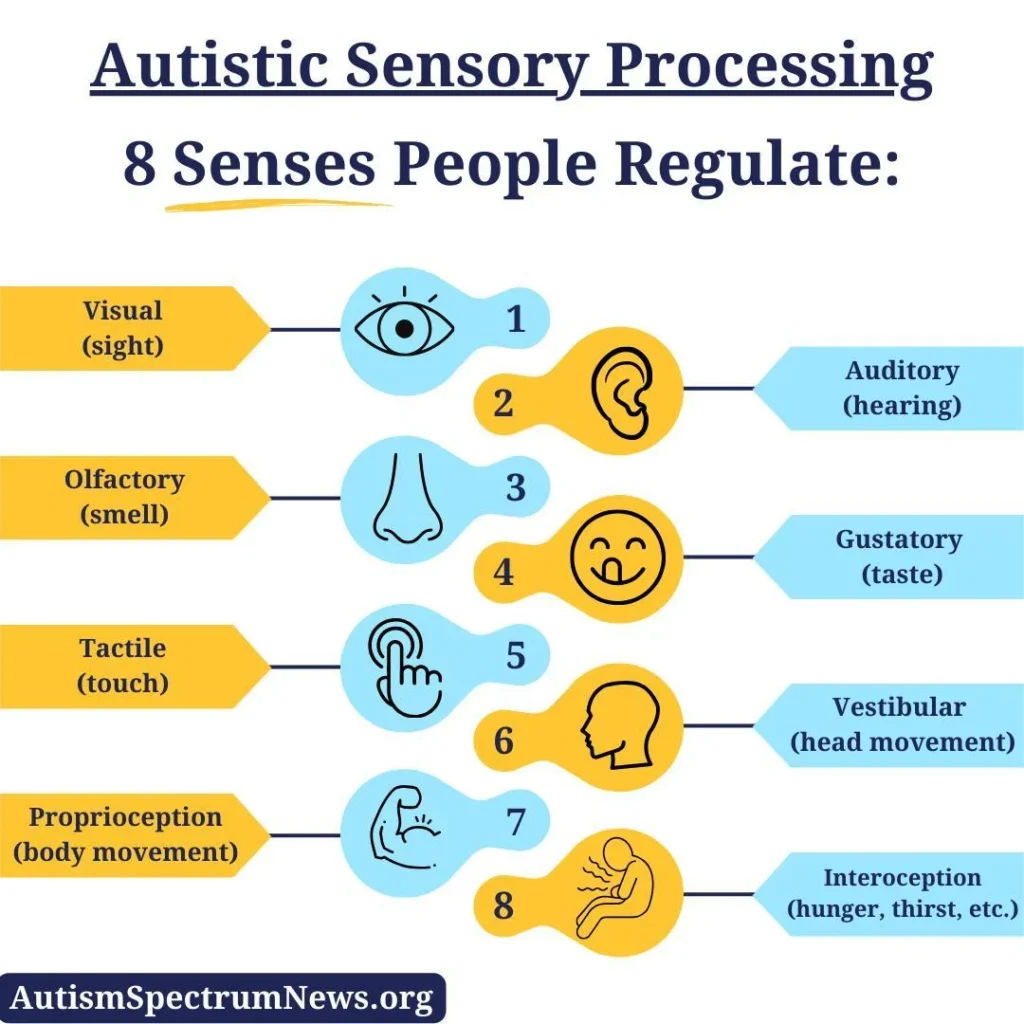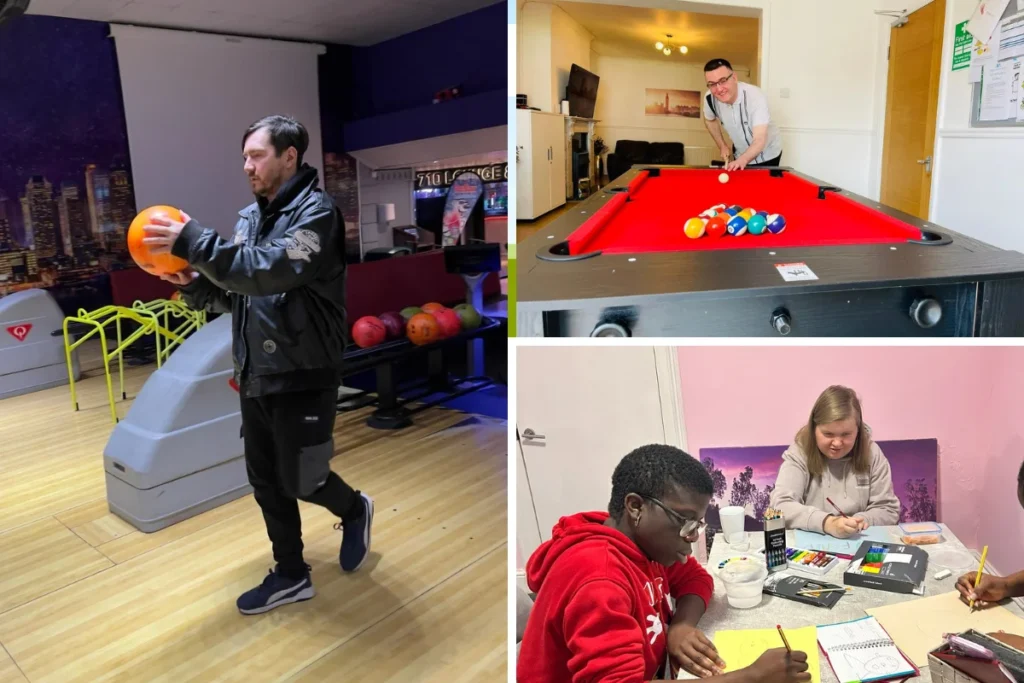Sensory activities for autism help children and adults process sounds, textures, and movement more easily. These activities can improve social skills, reduce stress, and make daily life feel more manageable.
In this blog, you’ll find simple and enjoyable sensory play ideas designed to support learning, relaxation, and overall well-being.
Table of Contents
Understanding Sensory Processing in Autism
Many individuals with autism experience sensory processing challenges, making it harder to cope with everyday sounds, textures, and movements. Some may feel overwhelmed by loud noises or bright lights, while others actively seek out sensory input, such as spinning or squeezing objects. These differences can affect comfort, communication, and social interactions.

This is where sensory activities can help. By introducing structured play that engages touch, sound, movement, and sight, these activities create a safe way to experience different sensations. Simple activities like playing with sand, using weighted blankets, or listening to calming music can help manage sensitivities and improve relaxation.
Below is a table summarising common sensory challenges and activities that may help:
| Sensory Challenge | Helpful Activities |
| Sensitivity to loud sounds | Soft background music, noise-cancelling headphones |
| Discomfort with textures | Playing with water, sand, or fabric swatches |
| Difficulty with balance | Trampoline jumping, yoga, or gentle rocking |
| Craving deep pressure | Weighted blankets, firm hugs, stress balls |
For both children and adults, this plays a key role in making daily life more comfortable. They also support social skills, emotional well-being, and independence, helping individuals engage more easily with their surroundings.
Sensory Activities Categorized by Sensory Type
Sensory activities help individuals with autism process different types of sensory input safely and enjoyably. Below are activities grouped by sensory type, each designed to support learning, relaxation, and engagement.
4.1. Tactile Activities
Tactile activities involve touch and texture, helping individuals understand different surfaces and sensations. These activities are great for improving sensory processing and fine motor skills.
- Sensory bins:Fill a container with rice, sand, or dried beans and let children engage with their hands.
- Textured materials: Use fabrics like silk, wool, and velvet to introduce different feelings.
- Playdough or putty: Squeezing, rolling, and shaping these materials strengthens hand muscles.
- Water play: Pouring, scooping, and feeling water helps with coordination and sensory input.
4.2. Auditory Activities
Auditory activities use sound to help individuals with sensory sensitivities or those who enjoy experiencing different tones and rhythms.
- Musical instruments: Drums, xylophones, and shakers introduce different sounds in a controlled way.
- Listening to calming sounds: Soft music, nature sounds, or white noise can provide comfort.
- Sound-matching games: Hide objects that make sounds and have children find them by listening.
- Singing and rhythm games: Clapping to beats or singing along to familiar tunes supports language and coordination.
4.3. Visual Activities
Visual activities involve light, colour, and movement, helping individuals with visual processing skills and attention.
- Bubble tubes and lava lamps: These provide a soothing effect with slow-moving lights.
- Light-up toys: Flashing or colour-changing objects can capture attention.
- Sensory bottles: Fill clear bottles with glitter, water, or beads to create a calming visual experience.
- Tracking games: Use a flashlight or moving toys to encourage eye movement and focus.
4.4. Vestibular and Proprioceptive Activities
Vestibular and proprioceptive activities help with balance, coordination, and body awareness through movement-based play.
- Swinging: A gentle back-and-forth motion can be calming and fun.
- Jumping: Use trampolines or jumping games to improve coordination.
- Pushing and pulling games: Activities like tug-of-war or pushing weighted objects build strength.
- Rocking chairs or balance boards: These help with body awareness and control.
Sensory Activities for Adults with Autism
Sensory engagement is just as important for adults as it is for children. It helps with relaxation, stress management, and daily functioning. Many adults with autism benefit from structured activities that provide comfort and stimulation in a way that suits their needs.
Here are some sensory autism activities for adults that can promote well-being and relaxation:
| Activity | Description |
| Yoga and stretching | Gentle movements help with body awareness and reduce stress. |
| Gardening | Handling soil, watering plants, and smelling flowers provide calming sensory input. |
| Cooking and baking | Mixing ingredients, feeling textures, and smelling different scents can be both engaging and therapeutic. |
| Listening to music | Soft melodies or rhythmic beats support relaxation and mood regulation. |
| Weighted blankets or deep-pressure activities | Provide comfort and help with relaxation. |
| Walking or light exercise | Supports balance and sensory integration through movement. |
Integrating these activities into daily routines creates a comfortable and engaging environment for adults with autism. Similarly, activities for old people in care homes promote relaxation, social interaction, and overall well-being.
Benefits of Sensory Activities for Individuals with Autism
Sensory activities can make daily life easier by helping individuals process sounds, textures, and movements more comfortably. These activities provide both children and adults with valuable learning experiences that support their well-being.
Key Benefits:
| Benefit | Description |
| Better sensory processing | Sensory play helps the brain respond to sights, sounds, and textures in a way that feels less overwhelming, making daily life easier. |
| Calmer emotions | Activities like soft music, weighted blankets, or deep-pressure exercises help reduce stress and anxiety, promoting relaxation. |
| Improved motor skills | Threading beads or playing with putty strengthens hand coordination while jumping or swinging improves balance and movement. |
| Stronger social skills | Group sensory games encourage communication and interaction, helping individuals connect with others naturally. |
Adult daycare facilities offer a safe space for adults needing daytime support, with structured activities to improve well-being.
Implementing Sensory Activities at Home or in Care Settings
Caregivers and educators can include these sensory activities into daily routines to create a comfortable, engaging environment. Here are some practical tips:
- Set up a calming space: Use soft lighting, quiet corners, and familiar textures to make the surroundings feel safe and comfortable. Items like weighted blankets, fidget tools, or noise-cancelling headphones can be helpful.
- Make activities part of everyday life: Sensory play doesn’t need to be separate. Simple ideas include using textured sponges at bath time, playing soft music during meals, or adding movement-based activities before bedtime.
- Observe individual responses: Pay attention to how someone reacts to different activities. If something feels overwhelming, adjust or swap it for a gentler option.
- Give choices: Let individuals pick activities they enjoy, whether it’s gardening, painting, or playing with sensory objects.
- Stay flexible: Sensory preferences can change over time, so it’s helpful to introduce new activities and adjust based on comfort.
A caregiver plays a crucial role in creating a supportive environment. Understanding the qualities of a good caregiver can make a significant difference in providing the right care and comfort.
Conclusion
Sensory activities for autism provide a simple and easy way to support relaxation, social skills, and daily comfort. From tactile play to movement-based activities, these experiences help both children and adults feel more at ease in their surroundings.
Every individual has different sensory needs, so it’s important to try various activities and adjust them accordingly. Whether at home or in a care setting, these activities can make a meaningful difference.
At Metro Care UK, we provide specialist support for autism, learning disability, adult care and more. If you need guidance on integrating sensory activities, contact us today, we’re here to help.
FAQs
What Are the Five Benefits of Sensory Play?
1. Improves cognitive skills: Encourages problem-solving and creativity.
2. Supports motor development: Strengthens fine and gross motor skills.
3. Reduces stress and anxiety: Helps with relaxation and emotional regulation.
4. Encourages social interaction: Promotes communication through shared activities.
5. Aids sensory processing: Helps individuals respond to textures, sounds, and movements more comfortably.
What Is Sensory Play for Adults?
Sensory play helps adults relax, manage stress, and stay engaged. Activities like aromatherapy, music therapy, yoga, and gardening provide calming sensory input. Tactile experiences, such as using soft fabrics or kinetic sand, can be soothing. These activities improve emotional well-being and focus, making daily tasks easier to manage.
Does Sensory Play Encourage Maturity?
No, sensory play doesn’t directly lead to maturity but helps with emotional regulation, problem-solving, and social skills. By improving sensory processing and reducing stress, it supports overall development. For both children and adults, sensory activities create a sense of comfort and stability, making everyday experiences more manageable.

